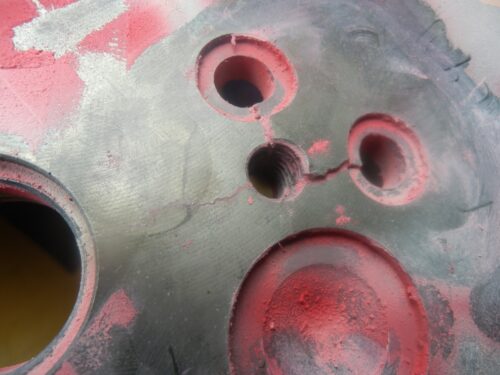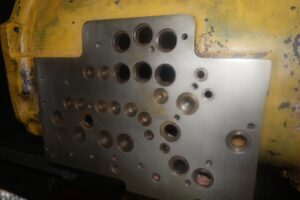The job of any vehicle’s transmission is to change gears to ensure the engine’s RPM’s are kept low (depending on speed and acceleration). When the vehicle’s transmission is in working order, fuel consumption is decreased, and the turning of the gears does not overload the engine.
With unpredictable environments and severe conditions, off-highway vehicle transmissions are put to the test every day in the mining industry. And when an off-highway vehicle is out for repair, it puts the operation and future revenues in jeopardy. This unfortunately was the case for the largest coal mining operation in Kalimantan, Indonesia.

While a vehicle was out for repair, the transmission case was dismantled incorrectly causing cracks and damage to the surface. This company could have used spot welding to repair and fill these cracks, but the risk of additional cracks and heat distortion was too high. Familiar with brush plating, they approached PT Rep Sal Indo, a SIFCO ASC partner in Jakarta, Indonesia to determine if the SIFCO Process® of selective plating was an option.
Selective plating, or brush plating as it’s known, is a portable method of electroplating localized areas without the use of an immersion tank. Its portability allows component repairs and OEM enhancements to happen in-situ with minimal masking and disassembly. The process is also 60 times faster than tank plating, allowing for operations to be completed within one working shift.
The area of repair on the transmission case was 356 x 620 mm (14 x 24.5 inches) and required Copper 2050 to fill defected areas, and a cap of Nickel 2080 for wear resistance. First, PT Rep Sal Indo pre-ground the surface to remove any high spots. The cracks were then filled by laser welding, after which a copper topcoat was applied. The copper was then dressed back to ensure it was flat across the entire surface. Finally, the area was capped with nickel.
 With the use of selective plating, the company was able to salvage the part, saving a considerable amount of cost that would come with replacing the transmission case. What’s more, is the repair was completed within its regular maintenance schedule and the vehicle was back in operation without any additional downtime.
With the use of selective plating, the company was able to salvage the part, saving a considerable amount of cost that would come with replacing the transmission case. What’s more, is the repair was completed within its regular maintenance schedule and the vehicle was back in operation without any additional downtime.

 Chinese (Simplified)
Chinese (Simplified)  English (UK)
English (UK)  French
French  German
German  Spanish
Spanish  Swedish
Swedish 